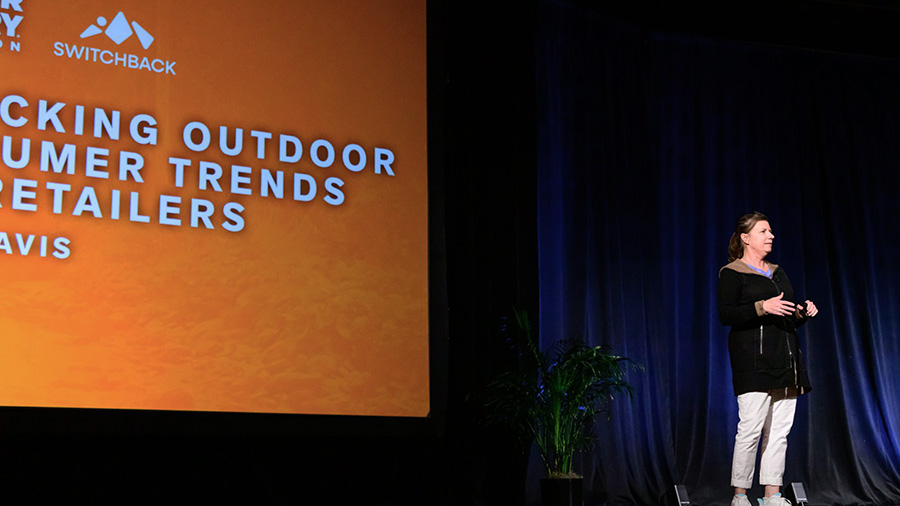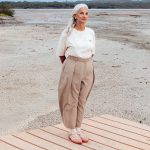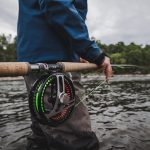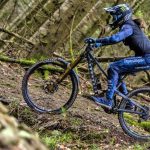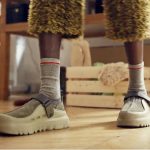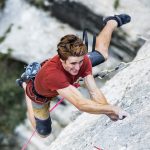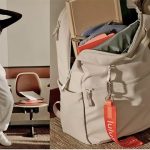At a session this week at Switchback Spring*, the twice-yearly venue for the outdoor industry, taking place this week in Nashville, TN, Kelly Davis, director of research at the Outdoor Industry Association (OIA), highlighted new consumer research that identifies the outdoor space as remaining fixated on “Core” consumers at the expense of reaching the more “Active” and “Casual” participants that are driving participation gains and who are estimated to make up 90 percent of outdoor spending.
The report, “Outdoor Consumer Trends 2025: Insights For A Changing Market,” was a joint effort between OIA and Diversified Communications, the parent of Switchback, and involved a survey of 6,166 U.S. consumers.
The survey was inspired by the outdoor industry’s challenges in capturing the dollars of newer participants who have arrived since the pandemic. OIA research indicates that outdoor participants in the U.S. now total 181.1 million, representing 27.5 million additions since 2019.
“They should be coming through your doors,” said Davis at the session. “They should be buying all kinds of things. And what we’re seeing is maybe that’s not quite happening. Why is that not quite happening?”
The research conducted a deeper dive than the typical analysis of “core” versus “casual” participants by adding a third “active” category for participants who are not as hardcore as core participants but a step above casual.
Beyond ranking outdoor participants by frequency or the number of times an individual participates in an activity annually, psychological and behavioral traits were analyzed to explore the “intensity” of each individual’s interest in the outdoors in the rankings.
Davis said the research found “Core” participants, whom she described as the “super-aggressive, fit-to-the-core architect that we all talk about all the time, donning, shredding, hucking off cliffs, etc.,” only make up 5.1 percent of outdoor participants.
The survey found that the “Active” category made up 49.7 percent of participants, and the “Casual” category, 42.0 percent.
While the minuscule number of Core participants limits their impact on the outdoor industry’s sales, the study found that core spending was not significantly higher than that of Active and Casual participants.
When the survey asked how much participants spent on outdoor gear over the last six months, Core respondents indicated $1,104.17, compared to $805.72 for Active participants and $689.95 for Casual participants.
Probing spending on outdoor apparel over the last six months, Core respondents spend an average of $1,084.17 versus $785.98 for Active and $714.73 for Casual.
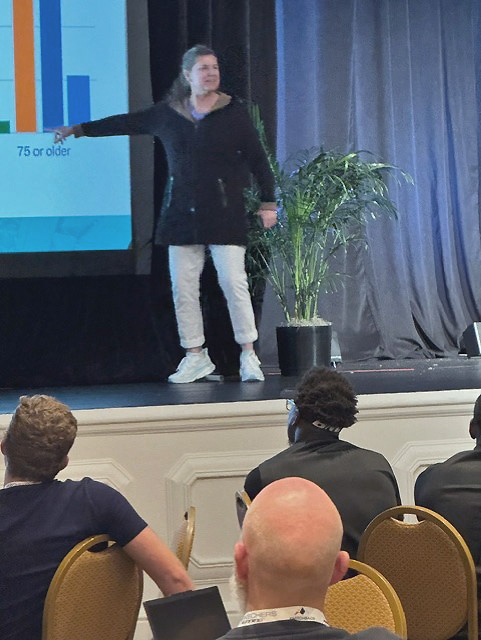 Davis said, “[Actives] are not spending significantly less than Core and neither are Casual, meaning the Casual and Active base are responsible for about 90 percent of the dollars in the market.”
Davis said, “[Actives] are not spending significantly less than Core and neither are Casual, meaning the Casual and Active base are responsible for about 90 percent of the dollars in the market.”
According to Davis, the opportunity for outdoor specialty stores lies with the active outdoor consumer who has a “budding interest” in the outdoors or is committed to the fitness or family benefits of spending time outdoors but not as committed as core participants.
“The person that’s most likely to walk in your door is active,” said Davis, referencing outdoor specialty stores. “That doesn’t mean they’re super-casual. It doesn’t mean that they don’t know what they’re talking about. Or they don’t know what they want. It simply means they’re not that super-aggressive, top-of-the-intensity pyramid that we’re used to thinking about when we think about core.”
She said the industry may have to rethink its marketing approaches, as newer active and casual participants are prioritizing aspects such as community and mental health in their outdoor experiences rather than the typical focus by core consumers on excitement or skill building.
Asked what type of outcome or effect they expect from their outdoor activities, all three outdoor participant types placed the top priority on “Happy,” “Calm,” and “Balance,“ but core participants stood out in also looking for “Excitement.“ Davis noted that outdoor advertising is still often focused on the “adrenaline rush“ imagery, which aligns with the Core participant. Davis said, “How many pictures have you seen of somebody hucking off a cliff because that’s what we think everybody aspires to. That’s not what we’re aspiring to anymore.”
Davis also said brands might have to review product design, including how more casual participants are using their product but also sees an opportunity for outdoor specialty stores to do a better job training staff to service casual and active consumers. Davis also said most stores naturally hire core-ranked outdoor participants for their selling floors, and they’re often biased against servicing beginners, frequently denigrating them with pejorative terms such as gapers or noobs. Davis said, “We’re going to spend more time welcoming people who maybe are not our idea of the archetype.”
Beyond their product knowledge, consumers newer to the outdoors should benefit from the store associates’ local knowledge of where to hike, camp, or run. Davis said, “I live in a heavy paddlefish and mountain bike area, and all my specialty shops know what you need. Certain types of downhill mountain bikes, for instance, might work better on our trails. They can sell you the equipment that’s going to work best in the local area.”
She advised, “Don’t think about just core and don’t think about everybody aspiring to be core. Think about people that may just want to go for a bike ride, a hike or maybe they want to drop a line in the water every once in a while. Those are the people that you’re dealing with on a day-to-day basis that are coming in to spend money at your shop.”
When asked where consumers conduct their research, the study revealed that store associates ranked as the third most popular option, cited by 16.6 percent of Core participants, 15.1 percent of Active participants, and 16.1 percent of Casual participants.
Davis also noted that store associates should understand that many consumers coming into outdoor shops won’t be buying products to tackle an activity, as the push toward more casual dressing received another boost from the pandemic.
“We’re dressing a lot more casually,“ said Davis. “Our lives are blurred. We’ve got hybrid work experiences now where sometimes we’re at home and sometimes we’re at work and maybe we go for a big walk in the middle of the day when we’re working, or maybe we go for a run. Or if you’re lucky, maybe you can go for a nice hike in the middle of the day. Our lives are a lot different than they used to be before COVID. So even if it’s associated with the activity, not all that will be spent specifically on stuff for the activity.”
Another opportunity for both outdoor retailers and brands is to upgrade their websites. Store or brand websites were cited as the top place consumers research before making a purchase, with 24.3 percent of Core participants, 24.9 percent of Active participants, and 19.4 percent of Casual participants.
“I’ve seen some of the worst product descriptions and some of the worst product images on branded retail websites, and it’s the number one place consumers are going to look,“ said Davis.
She suspected that using AI to enhance product descriptions would offer a quick return on investment. Davis said, “If you don’t capture the customer’s attention when they visit your website, whether you’re a brand or a retailer, you are going to lose them to somebody that does.”
The survey further found outdoor specialty chains to face a wide variety of competition, with Amazon ranking as the top place for all three outdoor consumer types, including Core, followed in the Top 5 by mass retailers (i.e., Costco, Walmart, Target); large sporting goods chains (Dick’s Sporting Goods, Bass Pro, Big 5); directly from brands, and social media (TikTok Shop, Facebook Marketplace).
Outdoor independent specialty retailers ranked sixth, with only 14.5 percent of all surveyed respondents indicating that they shop in independent outdoor specialty stores, including just 6 percent of Core outdoor consumers. Davis also said that independent outdoor specialty shops could be emphasizing their ability to provide community engagement over that of large sellers and that they often carry some “cool stuff“ that even REI does not.
Davis stressed that outdoor retailers should “follow the money“ in chasing the more casual outdoor consumer. She said a better understanding of what feelings the modern outdoor consumer associates with outdoor recreation can aid in selling the experience to other consumers.
“We are not selling climbing. We’re not selling running shoes, not selling any of that,“ said Davis. “We’re selling experiences and beyond, experiences; we’re selling calm and balance and happiness, most of all. And I would rather not sell anything else. So, be happiness dealers.”
*Switchback Spring 2025, taking place from June 16 to 18 at the Gaylord Opryland Resort & Convention Center in Nashville, TN., builds on the momentum of its original fall gathering, which launched in 2022 as a specialty outdoor showcase at The Running Event (TRE), the U.S. run and outdoor specialty retail conference and trade show. With the addition of new June dates, Switchback now provides a twice-yearly home for specialty retailers, media and brand leaders in the Active Outdoor Industry.
Images courtesy Switchback

